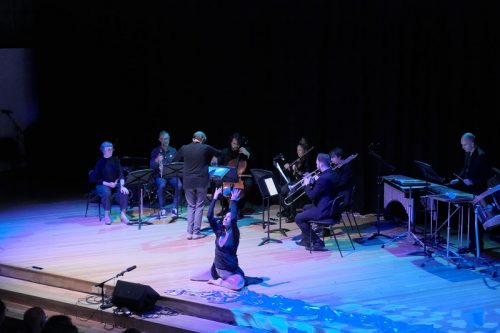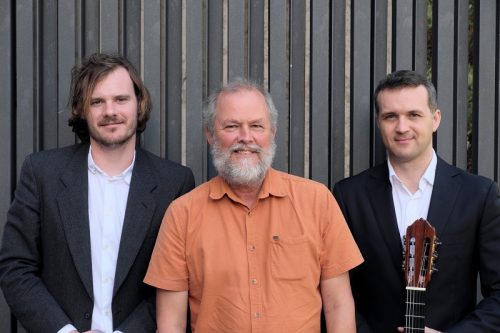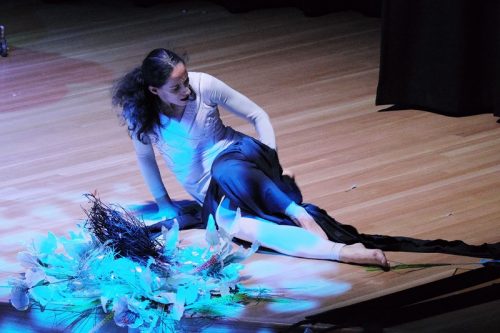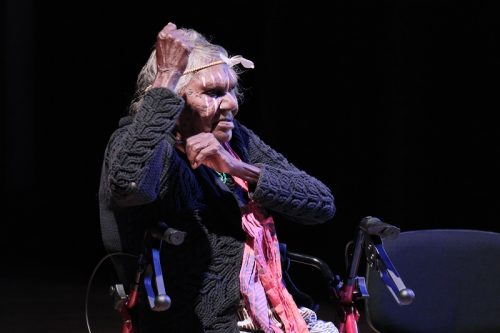
Canberra International Music Festival / Concert 21, “Rainbow Serpent”, James O Fairfax Theatre, National Gallery Of Australia, May 9. Reviewed by LEN POWER.
THE myths of the Rainbow Serpent have cultural significance around the world.
Its meaning can differ greatly between indigenous peoples so it was appropriate that this concert entitled “Rainbow Serpent” should have a variety of elements.
After singing a tentative version of “Advance Australia Fair” called “Anthem Combined”, the first performer, Joe Geia, an influential singer/songwriter in the development of contemporary indigenous music, hit his stride with three of his own songs.

He accompanied himself on guitar and the ANU Jazz Collective gave him fine support with a strong brass line-up, percussion, guitar and two back-up singers. His song ”Rain On My Window” was especially appealing, and every song was sung with warmth and great feeling. Geia’s down-to-earth style has a beguiling simplicity that is quite affecting.

A world premiere followed with Christopher Sainsbury’s new work for two guitars, “Rain Falls and After”, inspired by a haiku by poet, Isobel Robin. Performed with skill and precision by classical guitarists, Andrew Blanch and Vladimir Gorbach, this work was accessible, melodic and very enjoyable.
Brian Howard’s work from 1982, “The Rainbow Serpent”, was conducted by Roland Peelman with a chamber ensemble consisting of Véronique Serret (violin), Blair Harris (cello), Lamorna Nightingale (flute), Jason Noble (clarinet), Fletcher Cox (trumpet), Jackson Bankovic (trombone) and Adam Jeffrey (percussion). This demanding work was given a tight and energetic performance by the ensemble.

Originally performed in 1982 by the Seymour Group led by Stuart Challender with dancer Kelvin Coe, “The Rainbow Serpent” was given a new interpretation by dancer Tammy Gissell. Entitled “Mundaguddah”, the name Murrawarri people use to refer to the Rainbow Serpent, Gissell responded passionately to Brian Howard’s music, dancing with flair and invention. Her sinuous movements were highly symbolic of the serpent in the story. Her performance in this concert was also a world premiere.

The final item was “Ngarukuruwala” which featured the Tiwi Strong Women and one man presenting a number of traditional songs and dances. Vocalist Calista Kantilla endeared herself to the audience with her relaxed sense of humour as well as her fine story-telling. Songs and dances about various animals performed by the group were a fascinating insight into traditional music and movement.
For First Nations people, the story of the Rainbow Serpent is past, present and future. The group’s presentation of a final song about the impact of covid was in the spirit of now and the future in the story. Singing and dancing with arms outstretched, symbolically embracing the audience, the group’s performance was electrifying.
Who can be trusted?
In a world of spin and confusion, there’s never been a more important time to support independent journalism in Canberra.
If you trust our work online and want to enforce the power of independent voices, I invite you to make a small contribution.
Every dollar of support is invested back into our journalism to help keep citynews.com.au strong and free.
Thank you,
Ian Meikle, editor




Leave a Reply